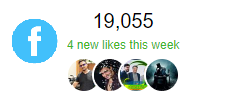What is Search Engine Optimization (SEO)? FINCHANNEL – The FINANCIAL
Search Engine Optimization (SEO) is the process of increasing the quantity and consistency of traffic to your website through organic search engine results.
Let’s break down the concept and look at the pieces to understand the true meaning of SEO:
· Traffic of high quality. You can have all the tourists you like, but if they’re coming to your site because Google says you’re an Apple computer resource when you’re just a farmer selling apples, that’s not quality traffic. Instead, you want to target customers who are truly interested in your products.
· The volume of traffic. More traffic is easier if you have the right users clicking through from certain search engine results pages (SERPs).
· The outcomes are natural. Many SERPs are dominated by advertisements. Any traffic that you don’t have to pay for is referred to as organic traffic.
A search engine can be thought of as a website where you type (or speak) a question into a box, and Google, Yahoo!, Bing, or whatever search engine you’re using magically responds with a long list of links to webpages that could answer your question.
That is right. But have you ever considered what’s behind those enchanted lists of hyperlinks?
The following is how it works: Google (or every other search engine you use) has a crawler that goes out and collects data on all the stuff they might find on the Internet. Crawlers return all of those 1s and 0s to the search engine in order to create an index. After that, the index is fed into an algorithm that tries to align all of the data with your query.
This section of our page is dedicated to teaching you everything you need to know about SEO. Start at the beginning and read the Beginner’s Guide to SEO if you’re completely new to the topic. If you’re looking for information on a particular topic, go where it’s most convenient for you.
When you’re ready to start walking the SEO walk, it’s time to put those SEO techniques to work on a web, whether it’s brand new or old. These pages will walk you through everything from choosing an SEO-friendly domain name to internal connection best practices.
A website isn’t complete until it has material. We’ve provided SEO for content its own section because it has so many unique variables. If you’re interested in learning more about keyword analysis, writing SEO-friendly copy, and the type of markup that lets search engines understand what your content is about, start here.
From anchor text to redirection, learn everything you ever wanted to know about connections. Read this collection of pages to learn when and how to use no follow, as well as whether guest blogging is still alive.
Search engine algorithms are constantly changing, and SEO strategies must adapt to keep up. So, if anyone gives you SEO advice that doesn’t feel quite right, double-check the subject.
You must be logged in to post a comment.
Raising healthy, educated, moral, successful children with a sense of…
“Helping to reduce the environmental impacts of our products and…
“The Ministry of Environmental Protection and Agriculture has plans to…
“The most important and rising point in the 4-year plan…








